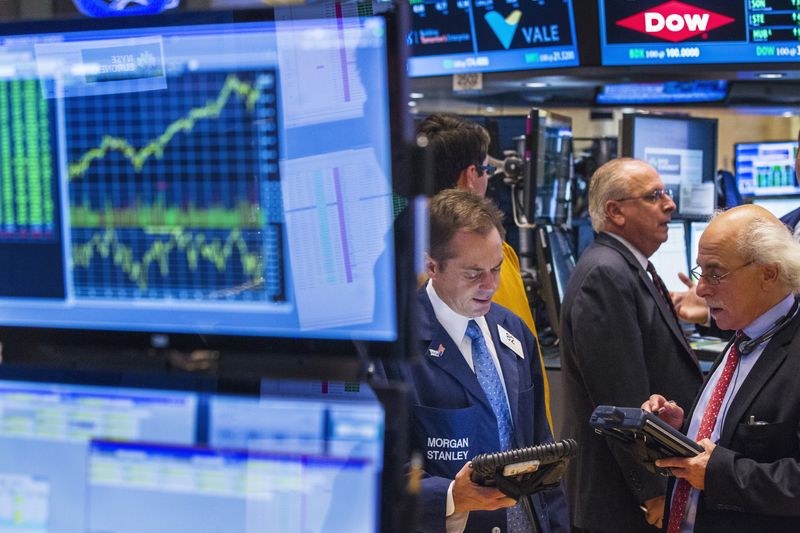(Bloomberg) -- There are two things that give Marko Kolanovic confidence in his bullish stocks call for 2022, even after a difficult start to the year for financial markets, with rising inflation and Russia-Ukraine tensions.
The co-head of global research at JPMorgan Chase & Co. (NYSE:JPM) has been asserting for some time that investors should buy dips in stocks -- but now he sees the acute pandemic phase of Covid nearing an end and better times ahead from China, which he expects to offset Federal Reserve tightening. And he sees scope for significant rotation within equities as these changes take place.
“Our base case is the end of the pandemic completely,” Kolanovic said in an interview. “During the spring and summer we will have a very strong recovery because omicron is in fast decline and now the immunity rates are really, really high.”
He added that when looking at pandemics in the last century, they lasted about two years and maybe three to four waves, “and then for the next 10 to 20 years nothing. We think we’re basically at that point, two-plus years of pandemic, we’ve had the four major waves. And so we think now maybe we’ll be fine for the next 10 or 20 years.”
Improvement from China should also brighten the global picture in coming months, he said.
“We think China is making a significant inflection point in terms of stimulating their economy, via both monetary and fiscal policy,” Kolanovic said. “We also expect or hope on the regulatory side some easing of regulatory pressure.”
JPMorgan was named top global research firm and number-one equity research team in Institutional Investors’ survey results released last month, after already having been awarded number-one global fixed income research team. Kolanovic was elevated to co-head of global research along with Hussein Malik in September -- and still continues to publish research along with his colleagues frequently. In recent weeks he’s said that bond traders are overpricing a hawkish Fed, and that recession fears are overdone in small-cap stocks, for instance. In December, very early after the detection of omicron, he advocated buying the dip in equities because of data suggesting that variant could be less deadly than other strains.
Still, Kolanovic doesn’t necessarily see an easy path for investors this year.
“You add the geopolitical friction points like Ukraine, and you can really produce some large moves which we think could still play going forward,” he said. “Everyone’s talking about Russia and Ukraine and it’s a very idiosyncratic thing. But it is critically tied to oil, gas and global energy security. We like exposure to energy directly by sector, but also some of the countries. Perhaps Russia is not the right place to invest, but maybe some of the countries that are proxies for commodities, we like that as well.”
About a year ago, Kolanovic said in the interview, he was bearish on the categories of innovation, clean energy, special-purpose acquisition companies (SPACs), crypto, and Covid beneficiaries -- and said now that they’re now all down by around half from that point, he’s less bearish.
Read more: ‘SPAC Winter’ Buries Warrants Amid Fruitless Hunt for Takeovers
“I would now be a little bit more neutral in the sense that a lot of damage has been done” in those categories, Kolanovic said. “There’s definitely good and cheap stuff there, like if you look at the biotech or some international ADR tech companies which are down 50% or 60%, solid companies.”
In terms of what he’d recommend, medium-term in the U.S. Kolanovic likes energy, materials, financials, rising rates, and assets tied to the rising commodity cycle and reopening of the economy. He also likes small caps, noting that their forward price-to-earnings ratios are around 20-year lows -- as well as emerging markets, predicated on the China and commodities themes.
Read more: China Small Caps May Stand Out Amid Dim Outlook, BofA Says
He sees opportunity in differentiation at the single-stock level, noting that many things got sold off about the same amount when some should have dropped more, or less.
“Have a little maybe stock-by-stock analysis to pick up the pieces in this indiscriminate high-beta, high-volatility selloff that was triggered by the Fed,” he said. “Maybe international tech stocks or biotech stocks in the U.S. that, as a theme, you could say have sold off too much. Opposite to these on the negative side would be low-volatility defensive stocks that held up really well -- but these stocks will get hurt by interest rates.”
He also expects volatility and market fragility to decrease in coming months.
“We think now we could be bottoming and the cycle can turn, and we do expect volatility to normalize. Our forecast for VIX is averaging 18, and so if we are at 30 or 26 we think the fair value is lower and VIX should eventually decline,” Kolanovic said. “We saw pretty extreme fragility conditions in January, equal to those during December 2018 and March and April 2020, which, again, the market repricing the Fed was the catalyst. But ultimately we don’t think this is as severe as the pandemic or even that December 2018 selloff. So we are somewhat positive that these things will gradually improve.”
©2022 Bloomberg L.P.
